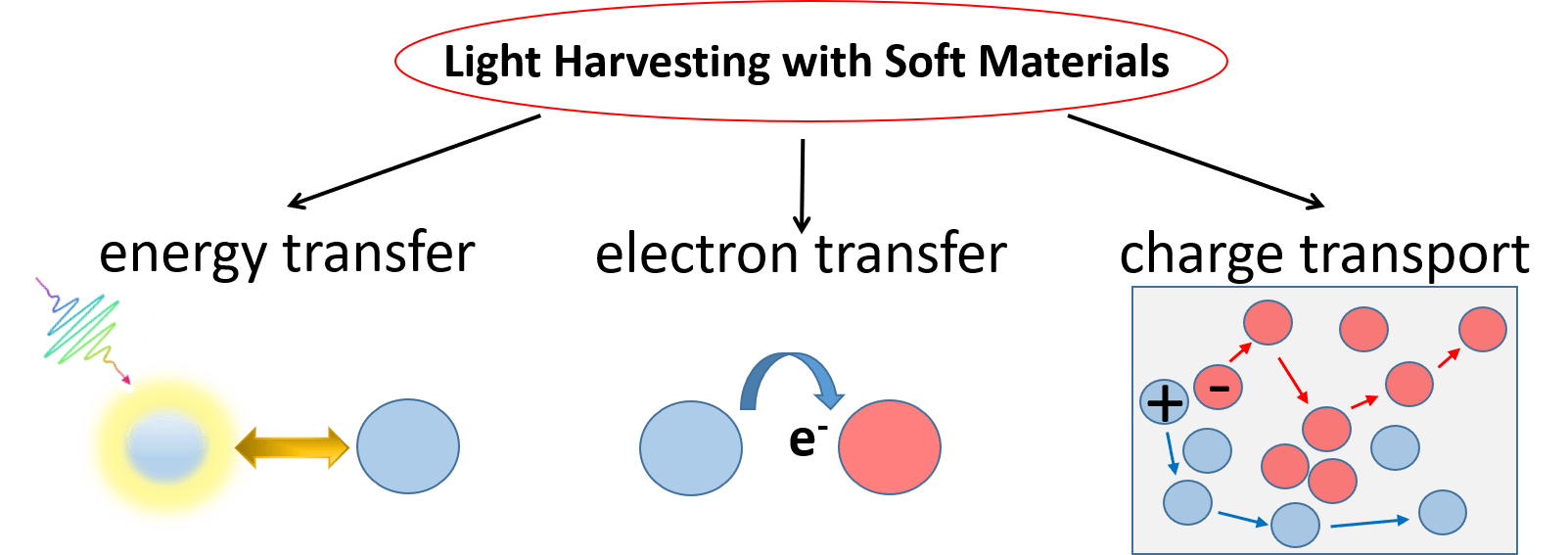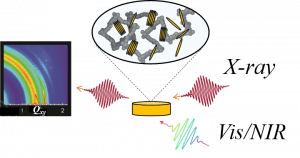 When a visible or near-IR photon is absorbed by a pigment molecule, a neutral electronic excited state – often called an exciton – is formed. In general, converting the energy of excitons to useful energy, such as electric or chemical potential energy, requires (i) efficiently and directionally moving excitons through space to a place where (ii) the exciton is converted into an electron/hole pair via electron transfer at a molecular donor/acceptor interface. Next (iii) electrons and holes must leave each other’s field of attraction to produce mobile charge carriers before they can recombine and thus waste the initial energy from sunlight. Understanding and controlling these primary steps of solar light harvesting form the foundation of our work.
When a visible or near-IR photon is absorbed by a pigment molecule, a neutral electronic excited state – often called an exciton – is formed. In general, converting the energy of excitons to useful energy, such as electric or chemical potential energy, requires (i) efficiently and directionally moving excitons through space to a place where (ii) the exciton is converted into an electron/hole pair via electron transfer at a molecular donor/acceptor interface. Next (iii) electrons and holes must leave each other’s field of attraction to produce mobile charge carriers before they can recombine and thus waste the initial energy from sunlight. Understanding and controlling these primary steps of solar light harvesting form the foundation of our work.
To study the above, we bring to bear a combination of spectroscopic and structural probes on our science questions of interest. Our primary measurement tools are stead-state and time-resolved fluorescence spectroscopy, time-resolved fluorescence anisotropy, light scattering and synchrotron X-ray scattering. The combination of these probes allows us to uncover nuanced structure-property relationships that help direct our efforts towards our overarching research goals.
 The group is currently focusing on three main directions:
The group is currently focusing on three main directions:
- Assembly of Hierarchical Light-Harvesting Systems
- Controlling Charge-Transport Networks in Organic Solar Cells
- Ultrafast Core-Excited Electron Dynamics in Conjugated Molecules
Our work is currently supported by an NSF CAREER award and ACS PRF New Directions grant.


